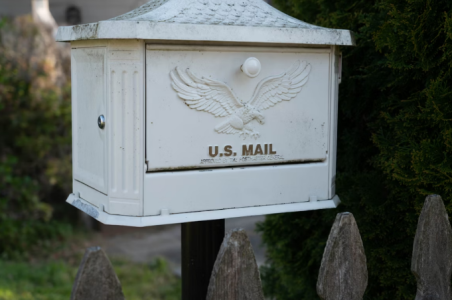How the US Postal Service has kept America connected—by train, plane, and even dog sled
- Replies 0
It didn’t originate with a bold flag waving in the wind or a catchy slogan plastered across walls, and it certainly wasn’t launched in the name of commerce or financial gain.
Long before the United States had its first official leader, there was already an organized effort to ensure that messages could travel from one scattered settlement to another, no matter the challenge.
Even now, as the pace of technological change continues to reshape how we communicate, the underlying human need to bridge physical distances remains just as strong as ever.
That enduring purpose is one reason why, even after 250 years of transformation, the US Postal Service continues to be a vital part of daily life.
The early version of this network was formed not out of convenience but necessity. It was an essential tool in the country’s separation from a monarchy and became a lifeline for communication during war.
In 1775, a year before the Declaration of Independence, the Second Continental Congress appointed Benjamin Franklin as the first postmaster general. That decision gave revolutionaries control over the movement of their own words.
From that moment forward, the system continued to grow alongside the nation itself. Postal routes extended into every direction as the American population spread westward.
Deliveries were made by horseback, railcar, dog sled, stagecoach, and later, by air and automobile. Each upgrade reflected a changing country and an increasingly complex need for fast, reliable information.
As communication needs evolved, so did the infrastructure. ZIP codes, first introduced in 1963, became critical in sorting and tracking national mail flow.

In time, the codes became more than geographic—they were used in marketing, politics, and consumer profiling. Today, nearly every official document, form, and online order depends on one.
The Postal Reorganization Act of 1970 turned the Post Office Department into a self-financing federal agency. This change meant that while still a public service, USPS now had to function with business-like financial discipline.
That model was further strained by the 2006 Postal Accountability and Enhancement Act, which forced it to prepay billions in retiree health benefits. The resulting financial pressure has never let up.
From 2007 through 2024, the USPS operated at a net loss of around $100 billion. Critics have argued the model is unsustainable, with mail volumes decreasing and operating costs rising.
President Donald Trump once described USPS as “a tremendous loser for this country” and proposed merging it with the Commerce Department. The suggestion sparked renewed debate over whether the agency should stay independent or be fundamentally restructured.
Also read: Step back in time: The oldest restaurant in every US State
Despite this, public trust in the institution remains high. According to a 2024 Pew Research Center survey, the USPS ranks second only to the National Park Service in favorability. In a video address, Postmaster General David Steiner rejected calls for privatization.
“I do not believe that the postal service should be privatized or that it should become an appropriated part of the federal government,” he said.
Even in its current form, the service maintains scale and reach few other institutions can match. It operates nearly 258,000 vehicles, serves 169 million delivery points, and employs over 640,000 workers.
Most of its workforce are career employees, and many are military veterans. In 2024 alone, the system processed over 116 billion mail pieces, with a growing portion consisting of packages from online commerce.
Those numbers, however, don’t capture the symbolic weight of the system. It’s about trust, access, and consistency. For many in rural and underserved areas, USPS is their only reliable connection to the outside world. From ballots to prescriptions to Social Security checks, its deliveries remain vital.
That role was made possible by a vision as old as the country itself. The Constitution gave Congress authority to establish post offices and routes. What followed was a deliberate effort to ensure that Americans could communicate across geographic and social boundaries.
This infrastructure became a backbone for political organizing, civic awareness, and national cohesion. For marginalized groups and social movements, mail was a way to reach people when mainstream platforms were inaccessible.
Civil rights leaders, environmental organizers, and nonprofits used it to fundraise and share information. Reduced shipping rates for educational and nonprofit materials helped expand access to books, magazines, and newspapers.
The system was never just about letters—it was about knowledge and power. Postal workers have also long faced risks that don’t always make the headlines.
In the Revolutionary War, mail carriers were targets for British forces. In the 19th century, frontier carriers faced harsh weather, theft, and violence. The early days of airmail cost 34 pilots their lives between 1918 and 1927.
Also read: A bite of America: 50 iconic dishes that define every US state
And today, the most common workplace hazard isn’t mechanical—it's dogs, with over 6,000 bite incidents recorded in 2024. Every part of the country has been touched by the system. In some cases, the post office was the only federal presence in town.
Post offices located in general stores or local businesses helped tie isolated areas into the broader nation. Whether it was flour or postage, Americans came to expect a place where both were available.
As the July 26 anniversary approaches, the USPS is releasing a pane of 20 stamps called 250 Years of Delivering. One design shows a modern mail carrier walking her route. The other revisits a 5-cent stamp from 1847 featuring Benjamin Franklin. Both images represent the span of American time the service has traveled.
Franklin, who had decades of experience running Philadelphia’s mail operations, understood the strategic power of efficient communication. His designs for postal routes helped the Continental Army stay better informed and more agile than British forces.
“The same orders from London would take two months,” historian Steve Kochersperger has noted. Franklin’s system gave the revolutionaries a decisive edge.
It was never just a mail system. It was national infrastructure, strategic intelligence, and political technology. When territories were added after the US–Mexico War in 1848, the postal service became key to integrating vast stretches of new land. Contracts, newspapers, and letters followed settlers into deserts and mountain towns.
The Pony Express, often romanticized, was only one part of a much larger framework. Its short-lived riders delivered letters from Missouri to California in just 10 days.
Behind them, contractors, railroads, and waterways built the backbone of long-haul delivery. The USPS knew early on that the frontier had to be included, no matter the cost.
That attitude continues. Whether delivering to an apartment block in New York or a cabin in Alaska, the price is the same. The system does not scale by profit margin. It scales by mandate: to serve every address, every person, every day.
Read next: Stamp prices are going up again—here’s what to know

What do you think—should the US Postal Service stay independent, or is it time for a radical overhaul? Has it earned its place as a permanent institution, or is reform the only path forward? Leave your thoughts in the comments and let us know where you stand. We read everything, and so does your mail carrier.
Long before the United States had its first official leader, there was already an organized effort to ensure that messages could travel from one scattered settlement to another, no matter the challenge.
Even now, as the pace of technological change continues to reshape how we communicate, the underlying human need to bridge physical distances remains just as strong as ever.
That enduring purpose is one reason why, even after 250 years of transformation, the US Postal Service continues to be a vital part of daily life.
The early version of this network was formed not out of convenience but necessity. It was an essential tool in the country’s separation from a monarchy and became a lifeline for communication during war.
In 1775, a year before the Declaration of Independence, the Second Continental Congress appointed Benjamin Franklin as the first postmaster general. That decision gave revolutionaries control over the movement of their own words.
From that moment forward, the system continued to grow alongside the nation itself. Postal routes extended into every direction as the American population spread westward.
Deliveries were made by horseback, railcar, dog sled, stagecoach, and later, by air and automobile. Each upgrade reflected a changing country and an increasingly complex need for fast, reliable information.
As communication needs evolved, so did the infrastructure. ZIP codes, first introduced in 1963, became critical in sorting and tracking national mail flow.

How the US Postal Service has kept America connected—by train, plane, and even dog sled. Image source: Emily Powers / Unsplash
In time, the codes became more than geographic—they were used in marketing, politics, and consumer profiling. Today, nearly every official document, form, and online order depends on one.
The Postal Reorganization Act of 1970 turned the Post Office Department into a self-financing federal agency. This change meant that while still a public service, USPS now had to function with business-like financial discipline.
That model was further strained by the 2006 Postal Accountability and Enhancement Act, which forced it to prepay billions in retiree health benefits. The resulting financial pressure has never let up.
From 2007 through 2024, the USPS operated at a net loss of around $100 billion. Critics have argued the model is unsustainable, with mail volumes decreasing and operating costs rising.
President Donald Trump once described USPS as “a tremendous loser for this country” and proposed merging it with the Commerce Department. The suggestion sparked renewed debate over whether the agency should stay independent or be fundamentally restructured.
Also read: Step back in time: The oldest restaurant in every US State
Despite this, public trust in the institution remains high. According to a 2024 Pew Research Center survey, the USPS ranks second only to the National Park Service in favorability. In a video address, Postmaster General David Steiner rejected calls for privatization.
“I do not believe that the postal service should be privatized or that it should become an appropriated part of the federal government,” he said.
Even in its current form, the service maintains scale and reach few other institutions can match. It operates nearly 258,000 vehicles, serves 169 million delivery points, and employs over 640,000 workers.
Most of its workforce are career employees, and many are military veterans. In 2024 alone, the system processed over 116 billion mail pieces, with a growing portion consisting of packages from online commerce.
Those numbers, however, don’t capture the symbolic weight of the system. It’s about trust, access, and consistency. For many in rural and underserved areas, USPS is their only reliable connection to the outside world. From ballots to prescriptions to Social Security checks, its deliveries remain vital.
That role was made possible by a vision as old as the country itself. The Constitution gave Congress authority to establish post offices and routes. What followed was a deliberate effort to ensure that Americans could communicate across geographic and social boundaries.
This infrastructure became a backbone for political organizing, civic awareness, and national cohesion. For marginalized groups and social movements, mail was a way to reach people when mainstream platforms were inaccessible.
Civil rights leaders, environmental organizers, and nonprofits used it to fundraise and share information. Reduced shipping rates for educational and nonprofit materials helped expand access to books, magazines, and newspapers.
The system was never just about letters—it was about knowledge and power. Postal workers have also long faced risks that don’t always make the headlines.
In the Revolutionary War, mail carriers were targets for British forces. In the 19th century, frontier carriers faced harsh weather, theft, and violence. The early days of airmail cost 34 pilots their lives between 1918 and 1927.
Also read: A bite of America: 50 iconic dishes that define every US state
And today, the most common workplace hazard isn’t mechanical—it's dogs, with over 6,000 bite incidents recorded in 2024. Every part of the country has been touched by the system. In some cases, the post office was the only federal presence in town.
Post offices located in general stores or local businesses helped tie isolated areas into the broader nation. Whether it was flour or postage, Americans came to expect a place where both were available.
As the July 26 anniversary approaches, the USPS is releasing a pane of 20 stamps called 250 Years of Delivering. One design shows a modern mail carrier walking her route. The other revisits a 5-cent stamp from 1847 featuring Benjamin Franklin. Both images represent the span of American time the service has traveled.
Franklin, who had decades of experience running Philadelphia’s mail operations, understood the strategic power of efficient communication. His designs for postal routes helped the Continental Army stay better informed and more agile than British forces.
“The same orders from London would take two months,” historian Steve Kochersperger has noted. Franklin’s system gave the revolutionaries a decisive edge.
It was never just a mail system. It was national infrastructure, strategic intelligence, and political technology. When territories were added after the US–Mexico War in 1848, the postal service became key to integrating vast stretches of new land. Contracts, newspapers, and letters followed settlers into deserts and mountain towns.
The Pony Express, often romanticized, was only one part of a much larger framework. Its short-lived riders delivered letters from Missouri to California in just 10 days.
Behind them, contractors, railroads, and waterways built the backbone of long-haul delivery. The USPS knew early on that the frontier had to be included, no matter the cost.
That attitude continues. Whether delivering to an apartment block in New York or a cabin in Alaska, the price is the same. The system does not scale by profit margin. It scales by mandate: to serve every address, every person, every day.
Read next: Stamp prices are going up again—here’s what to know
Key Takeaways
- The USPS was established in 1775 and predates the signing of the Declaration of Independence by one year.
- The 2006 Postal Accountability and Enhancement Act remains a central source of financial strain on the agency’s long-term budget.
- ZIP codes were introduced in 1963 and have become essential for routing, logistics, and modern commerce.
- More than 640,000 people work for the Postal Service, making it one of the largest civilian employers in the United States.






